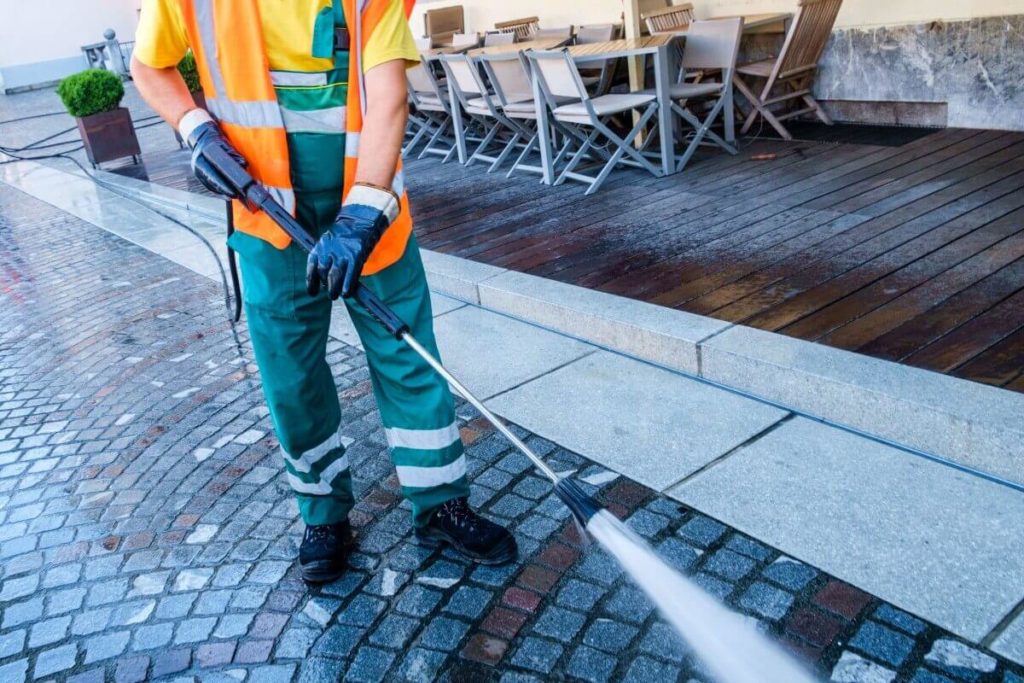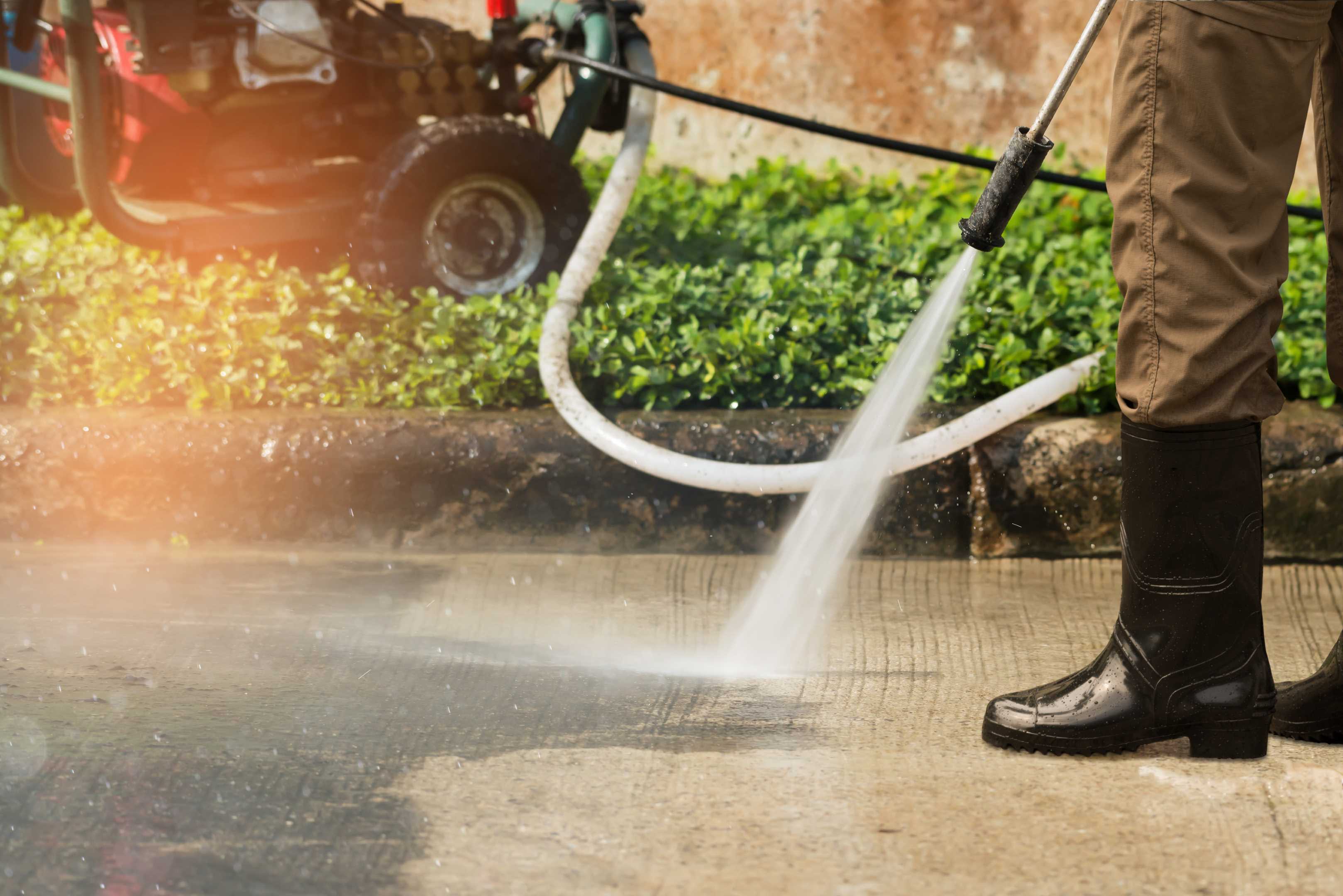Table Of Content

Connect the pressure washer to the outdoor faucet through an ordinary garden hose, attach a nozzle (see “Selecting the Best Nozzle,” below) and start the engine. Wear goggles to keep paint chips and dirt out of your eyes, and clothing that can get soaked. Spread old sheets or painter’s cloths on the ground and over shrubbery to catch paint chips.
Let Everything Dry
We Tried The Cheapest Power Washer At Home Depot. Here's How It Went - House Digest
We Tried The Cheapest Power Washer At Home Depot. Here's How It Went.
Posted: Mon, 26 Sep 2022 07:00:00 GMT [source]
When cleaning with pressure washers, methods vary by machine and home type, but there are some general tips for cleaning houses. For clean exterior surfaces with minimal risk of damage, test the spray pattern on an inconspicuous area. This will let you make sure the setting doesn't damage the exterior surface when you’re pressure washing houses of different types.
Scrape after washing
Cover any plants, shrubs, or garden areas close to the walls. Securing these covers with duct tape will ensure they stay in place. This step is crucial to protect your greenery from the powerful spray and any cleaning solutions used. If you pressure wash your house yourself and you already own a pressure washer and safety gear, the primary cost will often be the price of the detergent.
STEP 7: Repeat Steps 4 through 6 until you’ve washed the whole house.
Yes, pressure washing can damage your home if not done correctly. It’s a powerful tool, and just like using a power drill, you need to be careful. The key is to start low and gradually increase the pressure. First, protect your plants and garden areas with plastic sheeting or drop cloths. Then, make sure all your windows and doors are closed tightly. When it comes to pressure washing, many homeowners have questions.
From the siding, then move closer until you find the optimal cleaning distance. In general, work at a horizontal or slightly downward angle to avoid driving water up under the siding. Replace rotten boards and renail loose ones before pressure washing, so you don’t drive water through the siding and into the wall. Check the local weather report and choose a mild day in spring or fall for power washing. It’s a good idea to avoid washing in the strong summer sun, which could dry the cleaning agents before you are able to rinse them off. With a combination of proper cleaning products, scrubbing, good technique, and a thorough rinse, your home will soon be clean as a whistle once more.

Project step-by-step (
Pay special attention to small cracks and openings where water can sneak in. They don’t need a power outlet, so you can move around freely. This makes them a good choice for larger homes or areas without easy access to electricity. Pressure washers look like the ultimate squirt gun, but they aren’t toys.
FAQs About How to Power Wash a House

Here's how to pressure wash your whole house so that the new coat of exterior paint will stick better and last longer. Learning how to pressure wash a house is an effective way to ensure your house looks its best, especially if you want to prepare it for a fresh coat of paint. You can purchase a pressure washer and accessories or browse rental options online. On the other hand, professionals charge anywhere from 10 to 80 cents per square foot to pressure wash a home. If you’re thinking of hiring the job out, estimate your square footage before you start making calls. If you’re planning to purchase rather than rent a pressure washer, be sure to consult Bob Vila’s researched guide on the best pressure washers of 2022.
Electric models, on the other hand, are less powerful but more convenient for smaller tasks. Models like the Karcher K2 below are easier to handle and ideal for those who are new to pressure washing. Pressure washer safety and effective cleaning with a pressure washer both start with getting the work area ready. Once you have finished pressure washing your home, turn off the pressure washer and disconnect it from the garden hose. Move on to the next section of siding, repeating Steps 4 through 6 until you’ve cleaned the entire home. When you’re finished, pull up the drop cloths and plastic sheeting, toss the duct tape out, and put the cleaning agents and equipment away.
Keep the siding below damp so the TSP won’t leave visible drip marks. When finished, rinse from the top down using a garden hose. An add-on ladder stabilizer makes the ladder more secure. Once the first section is thoroughly scrubbed, put on the safety goggles.
If you plan to rent a machine, the rental agent will be able to recommend an appropriate pressure washer for your job. It’s worth noting that pressure washers are bulky and oftentimes quite heavy—some models weigh more than 100 pounds. You may need a helper and a truck to get the pressure washer home. Getting your house ready for pressure washing is a key step you shouldn’t overlook. Proper preparation can prevent damage and make the cleaning process smoother and more effective. Here’s how you can set the stage for a successful pressure wash.
And always approach the task with safety in mind, protecting yourself, your home, and those around you. The point of pressure washing your house siding before painting is to wash it, not to strip the paint. Clean high areas beyond the reach of the pressure washer extension with a scrub brush and a solution of detergent and TSP mixed in water. Begin from the lower areas and work upward, rinsing frequently.
Nashville company aims to wash the homes of widows in the city for free - WZTV
Nashville company aims to wash the homes of widows in the city for free.
Posted: Fri, 08 Jul 2022 07:00:00 GMT [source]
For houses with brick, siding or stucco, there are specific steps you need to take. Pressure washing, also known as power washing, involves using a high-velocity water spray to clean dirt and residue from the exterior of a house. This type of cleaning is a particularly important preparatory step before painting or re-painting your house.

No comments:
Post a Comment